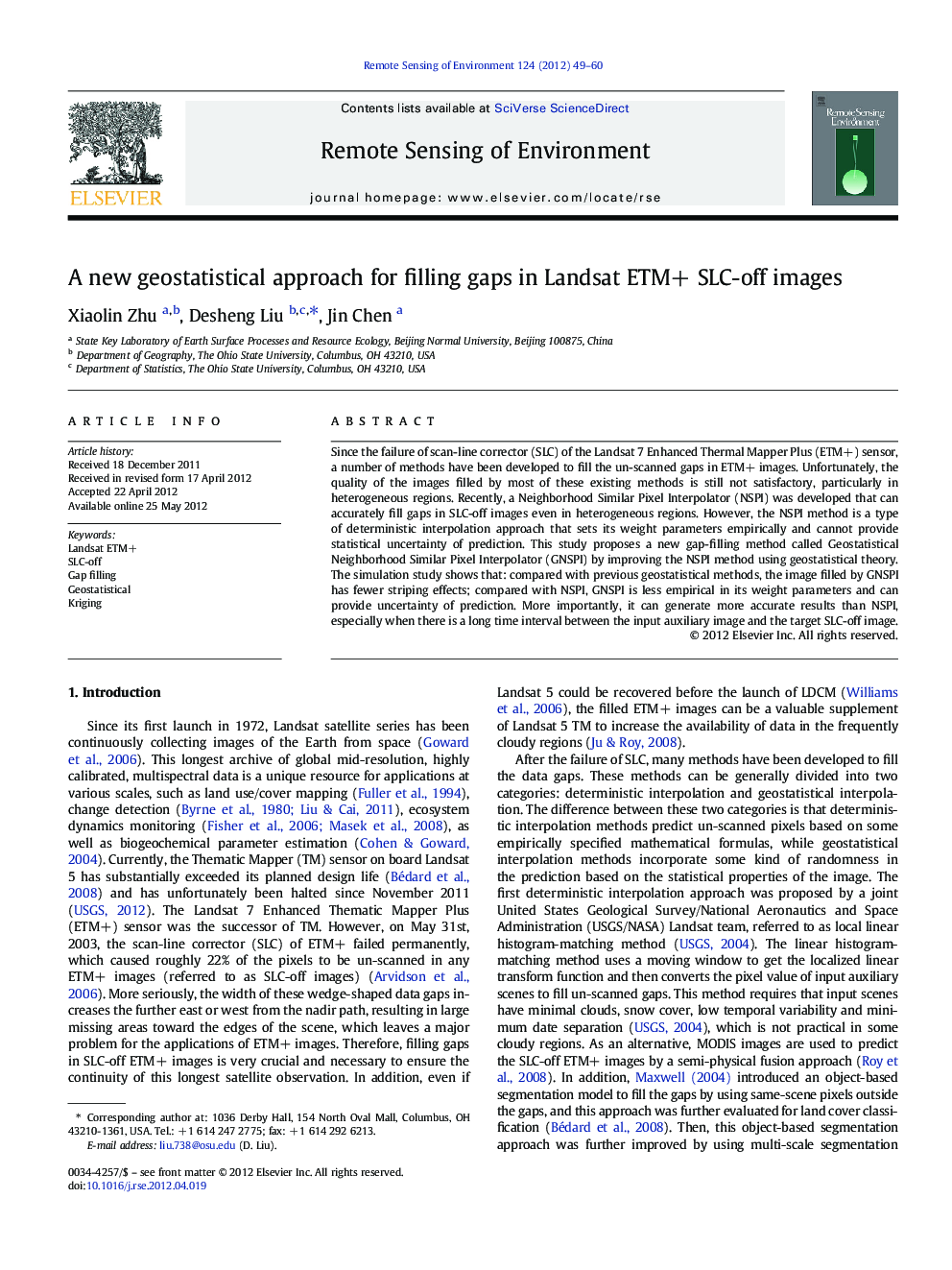| Article ID | Journal | Published Year | Pages | File Type |
|---|---|---|---|---|
| 4458987 | Remote Sensing of Environment | 2012 | 12 Pages |
Since the failure of scan-line corrector (SLC) of the Landsat 7 Enhanced Thermal Mapper Plus (ETM+) sensor, a number of methods have been developed to fill the un-scanned gaps in ETM+ images. Unfortunately, the quality of the images filled by most of these existing methods is still not satisfactory, particularly in heterogeneous regions. Recently, a Neighborhood Similar Pixel Interpolator (NSPI) was developed that can accurately fill gaps in SLC-off images even in heterogeneous regions. However, the NSPI method is a type of deterministic interpolation approach that sets its weight parameters empirically and cannot provide statistical uncertainty of prediction. This study proposes a new gap-filling method called Geostatistical Neighborhood Similar Pixel Interpolator (GNSPI) by improving the NSPI method using geostatistical theory. The simulation study shows that: compared with previous geostatistical methods, the image filled by GNSPI has fewer striping effects; compared with NSPI, GNSPI is less empirical in its weight parameters and can provide uncertainty of prediction. More importantly, it can generate more accurate results than NSPI, especially when there is a long time interval between the input auxiliary image and the target SLC-off image.
► A new geostatistical method called GNSPI is proposed to fill gaps in ETM+ SLC-off images. ► GNSPI improves the original NSPI method using geostatistical theory. ► Compared with other geostatistical methods, GNSPI improves the prediction accuracy greatly. ► Compared with the NSPI method, GNSPI is more accurate and provides prediction uncertainty.
